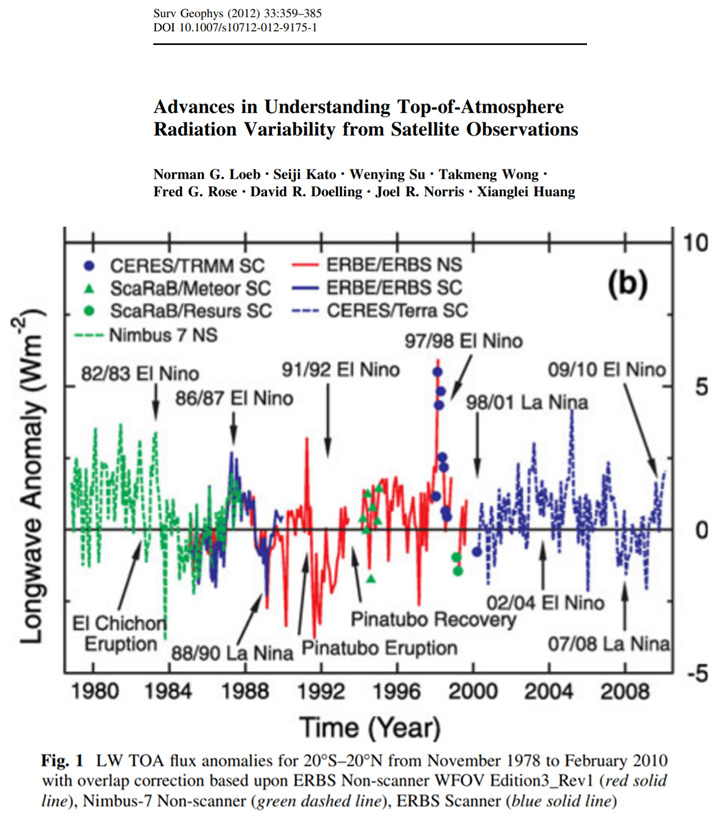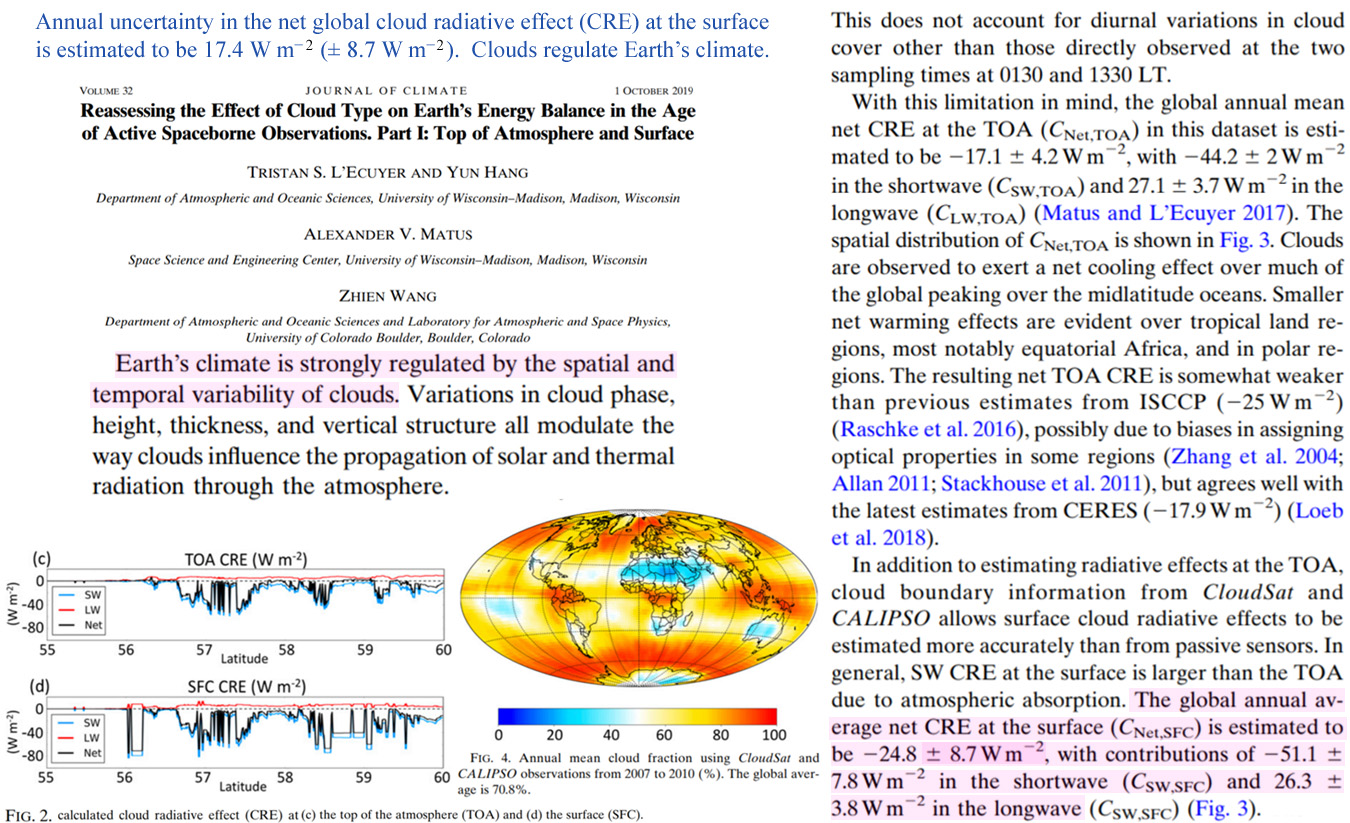Clouds regulate Earth’s climate. New studies suggest uncertainty in clouds’ surface radiative effects reach 17.4 W/m² per year (±8.7 W/m²/year). Total CO2 climate forcing is said to be just 0.02 W/m² per year. The difference in these magnitudes preclude detection of a CO2 signal in climate forcing.
According to Feldman et al. (2015), a 2 ppm increase in CO2 per year (22 ppm over the 11 years from 2000-2010) results in a surface radiative forcing influence of 0.02 W/m², or 0.2 W/m² per decade. This is said to be just “ten per cent of the trend in downwelling longwave radiation” when clouds and water vapor are considered.
In contrast, the influence of clouds in total longwave forcing is substantially larger, with radiative forcing trends reaching ±4 W/m² per decade.
From 1978 to 2010, the total longwave anomalies reached amplitudes of about ±2 W/m² per year (Loeb et al., 2012, below image). These anomalies dwarf the 0.02 W/m² per year radiative influence from CO2, and thus factors other than CO2 must be driving the variability.
Further, the overall trend in longwave or greenhouse effect forcing appears to have been flat during this 30-year period. CO2’s 0.2 W/m² per decade contribution may have had no net impact on the trend.

Image Source: Loeb et al., 2012
Even if a CO2 forcing signal was detectable in an overall trend over the last few decades, it would be lost amid the uncertainty and noise of the radiative effects of clouds.
According to L’Ecuyer et al., 2019, the global annual net cloud radiative effect (CRE) at the Earth’s surface is estimated to be -24.8 ±8.7 W/m². In other words, when cloud cover increases, surface temperatures cool because the net shortwave effects of cloud (-51 W/m²) exceed the net longwave effects of cloud (+26.3 W/m²). The uncertainty value associated with this overall surface forcing estimate, ±8.7 W/m², has a range of 17.4 W/m².
If CO2’s net radiative effect in surface forcing is 0.02 W/m² per year and the uncertainty the radiative effects of clouds is ±8.7 W/m² per year, this means that uncertainty is 870 larger than the CO2 influence.
A CO2 forcing signal is therefore not detectable in the Earth’s energy balance.






[…] über Uncertainty In Natural Climate Forcing Is 870 Times Larger Than CO2 Forcing – A CO2 Signal Is Thus… […]
I got an interesting result:
http://phzoe.com/2020/03/13/geothermal-animated/
Uncertainty indeed!
This is right in line with Pat frank’s work that took him 7 years to get published.
And all of this is consistent with …
“H.-J. Lüdecke und C. O. Weiss: The 1850 to 1990 Rise of Global Temperature is Consistent with Natural Cycles. Poster präsentiert auf der European Geosciences Union (EGU) General Assembly 2018 in Wien, 8.-13. April 2018.” (https://www.horstjoachimluedecke.de/egu-poster )
8.7 / 0.02 is 435, not 870
[…] https://notrickszone.com/2020/03/16/uncertainty-in-natural-climate-forcing-is-870-times-larger-than-… […]
[…] Uncertainty In Natural Climate Forcing Is 870 Times Larger Than CO2 Forcing – A CO2 Signal Is … […]
[…] https://notrickszone.com/2020/03/16/uncertainty-in-natural-climate-forcing-is-870-times-larger-than-… […]